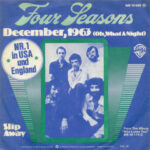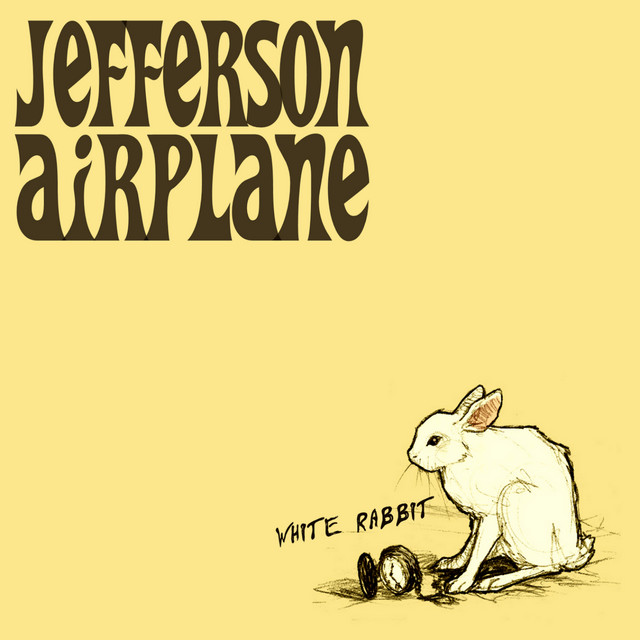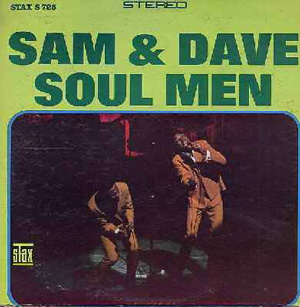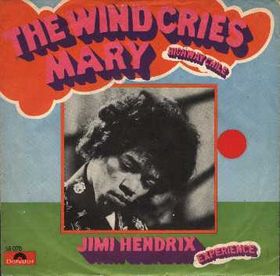 “December 1963 (Oh, What a Night)” by The Four Seasons stands as one of those rare pieces of popular music that transcends decades, genres, and even generations of listeners. When people think of The Four Seasons, they often think first of Frankie Valli’s unmistakable falsetto soaring through early 1960s classics like “Sherry,” “Big Girls Don’t Cry,” and “Walk Like a Man.” Those early hits cemented the group as one of the definitive acts of the pre-British Invasion era, defining the sound of doo-wop and pop at a time when American radio was brimming with vocal harmony groups. Yet “December 1963 (Oh, What a Night),” released in 1975, not only revitalized The Four Seasons’ career but also demonstrated their adaptability. It’s a track that sounds nothing like their early material, and in many ways, it reintroduced the band to a world that had largely moved on to disco, funk, and rock. Instead of fading into nostalgia, The Four Seasons delivered one of the most enduring party anthems of the 1970s, one that continues to be a staple at weddings, dance floors, and karaoke bars around the world.
“December 1963 (Oh, What a Night)” by The Four Seasons stands as one of those rare pieces of popular music that transcends decades, genres, and even generations of listeners. When people think of The Four Seasons, they often think first of Frankie Valli’s unmistakable falsetto soaring through early 1960s classics like “Sherry,” “Big Girls Don’t Cry,” and “Walk Like a Man.” Those early hits cemented the group as one of the definitive acts of the pre-British Invasion era, defining the sound of doo-wop and pop at a time when American radio was brimming with vocal harmony groups. Yet “December 1963 (Oh, What a Night),” released in 1975, not only revitalized The Four Seasons’ career but also demonstrated their adaptability. It’s a track that sounds nothing like their early material, and in many ways, it reintroduced the band to a world that had largely moved on to disco, funk, and rock. Instead of fading into nostalgia, The Four Seasons delivered one of the most enduring party anthems of the 1970s, one that continues to be a staple at weddings, dance floors, and karaoke bars around the world.
The song’s origins are fascinating because they tie together the past and the present of the group. Bob Gaudio, the group’s keyboardist, songwriter, and producer, wrote the track with his future wife Judy Parker. Initially, it was intended to be a nostalgic celebration of the end of Prohibition in the United States, originally titled “December 1933.” The concept was to recall a moment in time that symbolized release, liberation, and cultural change. However, Gaudio felt the historical distance of Prohibition was too detached from what he wanted to convey. By shifting the date forward to December 1963, the song transformed into something more intimate and relatable—a reflection of personal liberation, specifically a man’s memory of a first romantic or sexual encounter. That change gave the track a warmth and accessibility that has allowed it to endure as not just a disco-era hit but a timeless celebration of life’s pivotal moments.
One of the most striking things about “December 1963 (Oh, What a Night)” is the way it diverges from The Four Seasons’ traditional vocal structure. Whereas most of their hits were driven by Frankie Valli’s falsetto, this track instead featured drummer Gerry Polci as the lead vocalist for much of the song, with bassist Don Ciccone providing the falsetto backing lines. Valli himself only sang a few ad-libbed phrases, letting his bandmates take center stage. This vocal reshuffling was unconventional for a group so closely identified with one iconic voice, but it was precisely this departure that gave the song freshness. Listeners heard something new from The Four Seasons, while still being anchored to their recognizable harmonies. It was a risk, but one that paid off massively.
Musically, the song blends pop, disco, and soul influences into a track that feels effortlessly fun. From the opening keyboard riff to the driving rhythm section, it’s impossible not to feel the urge to move when it begins. The bassline is particularly notable, grooving along with a sense of light funk that was perfectly in step with mid-1970s dance music trends. Unlike the wall-of-sound style harmonies of their early days, “December 1963” is relatively stripped down, allowing the instrumentation to shine alongside the vocals. The strings and brass arrangements give it an almost cinematic quality, but the heartbeat of the song is in its rhythm—a reminder that this was the height of the disco era.
Lyrically, the song is disarmingly simple, but therein lies its genius. It’s essentially a fond recollection of a single night of romance. There are no grand declarations, no dramatic heartbreaks, no complex narratives. Instead, it captures the bittersweet glow of nostalgia, framed in the perspective of someone looking back with a smile at a transformative moment in their youth. “Oh, what a night,” the chorus repeats, and that line alone carries a universal resonance. Everyone has had a night they remember with joy, excitement, or longing, and the song taps into that collective memory. It’s both personal and universal, rooted in specific imagery but broad enough to speak to anyone who’s ever reminisced about youthful experiences.
When it was released in December 1975 as part of the album Who Loves You, the song quickly began climbing the charts. By March 1976, it reached number one on the Billboard Hot 100, and it also topped the UK Singles Chart. Its success wasn’t limited to just one country or one moment—it became an international hit, resonating across markets that often didn’t overlap musically. The timing of its release was also crucial. The mid-70s were dominated by disco and dance music, but “December 1963” had a unique quality that allowed it to sit comfortably alongside disco hits while still appealing to fans of traditional pop. The track wasn’t weighed down by heavy disco production; it had a lighter, breezier feel, which made it versatile.
The legacy of “December 1963 (Oh, What a Night)” is remarkable not only because of its initial success but also because of its afterlife. The song has enjoyed several revivals, including a significant resurgence in the 1990s thanks to a remix by Dutch DJ Ben Liebrand. This 1994 remix returned the track to the top 20 in multiple countries, proving that its appeal extended far beyond its original context. Unlike many songs from the disco era that feel dated, “December 1963” somehow retains a freshness that makes it continually rediscoverable. It’s telling that younger generations, many of whom were not even alive when the song was first released, still know it and sing along when it comes on.
Part of this enduring popularity comes from its place in pop culture. The song has been used in countless films, TV shows, and commercials, often as shorthand for nostalgia, romance, or celebratory joy. It has appeared in movies like Forrest Gump and Jersey Boys (the jukebox musical based on the career of The Four Seasons), as well as shows like The Sopranos. Every time it’s used, it not only reintroduces the track to new audiences but also reinforces its association with moments of lighthearted happiness. It’s the kind of song that instantly sets a mood, which is why it remains a go-to selection for wedding receptions and parties.
What’s particularly fascinating about “December 1963” is how it has overshadowed much of The Four Seasons’ earlier catalog in terms of cultural recognition. While their early hits are still beloved and respected, this track feels like the one that truly transcended eras. To this day, if you were to ask someone under 40 to name a Four Seasons song, chances are they’d say “Oh, What a Night” before they’d say “Sherry” or “Big Girls Don’t Cry.” In that sense, it functions as both a late-career triumph and a reinvention, ensuring that the band’s legacy didn’t remain trapped in the early 1960s.
The creation of the song also highlights Bob Gaudio’s genius as a songwriter and producer. Gaudio had always been the backbone of The Four Seasons’ sound, responsible for many of their biggest hits, but “December 1963” is perhaps his most perfect marriage of lyric, melody, and production. It’s deceptively simple, and yet that simplicity is what makes it timeless. Many artists attempt to create nostalgia-driven songs, but they often come off as overly sentimental or forced. “December 1963” avoids that pitfall by focusing not on broad sweeping cultural statements but on one person’s memory. In doing so, it paradoxically becomes more universal.
The song’s impact on The Four Seasons themselves cannot be overstated. By the mid-1970s, the band could have easily been dismissed as a relic of a bygone era. The rock revolution of the late 60s and early 70s had pushed harmony-driven pop groups aside, and many of their contemporaries had faded into oldies circuits. Yet with the success of “Who Loves You” and especially “December 1963,” The Four Seasons proved they could adapt to changing musical landscapes. Frankie Valli himself had a solo hit around the same time with “My Eyes Adored You,” and the combination of his solo resurgence and the group’s new disco-infused sound placed them back at the forefront of popular music.
Looking at the track nearly fifty years later, its magic lies in its refusal to be pinned down. Is it a disco song? Yes, in part, but it doesn’t sound exactly like Donna Summer or the Bee Gees. Is it a pop song? Absolutely, but its groove and instrumentation make it more than just a radio-friendly ditty. Is it a nostalgic ballad? Kind of, though its tempo and rhythm are too joyful to feel melancholic. It exists in a liminal space where it can be all of these things at once, which may explain why it continues to resonate across so many demographics.
There’s also a deeply human quality to the track. In the end, “December 1963 (Oh, What a Night)” isn’t about politics, social change, or grand narratives—it’s about a memory. Memories are messy, imperfect, and often defined by how they felt rather than what they objectively were. The song captures that feeling better than most pop songs ever have. The mix of excitement and wistfulness, the sense of looking back while still wanting to dance in the present, makes it uniquely powerful.
Over time, the song has also gained a certain ironic charm. For a band that made its name in the early 1960s, to later have a massive hit that celebrates a night in December 1963 almost feels like destiny. It’s as if the group was memorializing the very era in which they first became stars, even if the song’s narrative was meant to be more personal. That overlap between the personal and the historical gives the track another layer of meaning, one that listeners may not consciously recognize but nonetheless feel.
“December 1963 (Oh, What a Night)” is one of those rare pop songs that has managed to escape the trap of nostalgia while being fundamentally about nostalgia. It continues to thrive not because it locks listeners into one era but because it opens a doorway into the universal human experience of looking back fondly on youth, love, and fleeting joy. For The Four Seasons, it was a reinvention and a renaissance. For listeners, it remains a timeless anthem that feels as fresh today as it did when it first hit the airwaves in 1975.
Oh, what a night indeed.


